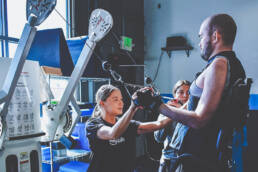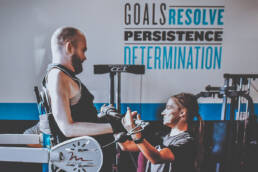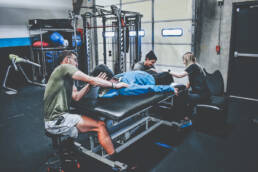Spinal Cord Locomotor Activity
The spinal cord has its own intrinsic circuits that can generate rhythmic activity and produce coordinated movements even without input from the brain. This phenomenon is also known as “spinal cord central pattern generators”.
The spinal cord central pattern generators are groups of neurons that are capable of producing rhythmic patterns of activity in the spinal cord, such as those involved in walking, running, and swimming.
Studies have shown that the spinal cord central pattern generators can produce complex movements that resemble normal locomotion, even in the absence of descending signals from the brain.
Sensory & Motor Inputs:
- Descending signals from the brain
- Sensory feedback from the limbs
- Inputs from other spinal cord circuits
Recent Research
Recent research has focused on understanding the cellular and molecular mechanisms underlying the spinal cord central pattern generators. Studies have identified specific populations of neurons and neurotransmitters that are involved in generating and modulating rhythmic activity in the spinal cord. For example, one group of neurons that has been implicated in spinal cord locomotor activity is the so-called “V2a interneurons,” which are involved in coordinating the activity of different motor neuron pools in the spinal cord.
Applications
These findings have important implications for the treatment of spinal cord injury, as they suggest that even if descending signals from the brain are disrupted, it may be possible to activate and modulate the spinal cord central pattern generators to produce functional movements. This approach, known as “activity-based therapies,” involves providing sensory and motor inputs to the spinal cord to activate the central pattern generators and promote motor recovery. Activity-based therapies have shown promise in improving locomotor function in animal models of spinal cord injury and are currently being evaluated in clinical trials in humans.
Take the Next Step Toward Recovery
Whether you’re just beginning your journey or looking for new ways to push forward, NeuAbility is here to help. Contact us today or explore our programs to see how we can support your path to greater independence, strength, and community.
Like this article? Spread the word!
Related Posts
May 9, 2025
Activity-Based Therapy for Paralysis: Building Strength, Independence, and Community
Learn how activity-based therapy (ABT) helps individuals with paralysis improve motor…
May 9, 2025
Physiological Barriers to Spinal Cord Injury Recovery: Challenges and Research Directions
Explore the physiological barriers that impact spinal cord injury recovery, including…
May 9, 2025
6 Powerful Ways to Boost Neuroplasticity for Brain Recovery and Function
Explore six proven ways to enhance neuroplasticity—including exercise, brain stimulation,…





